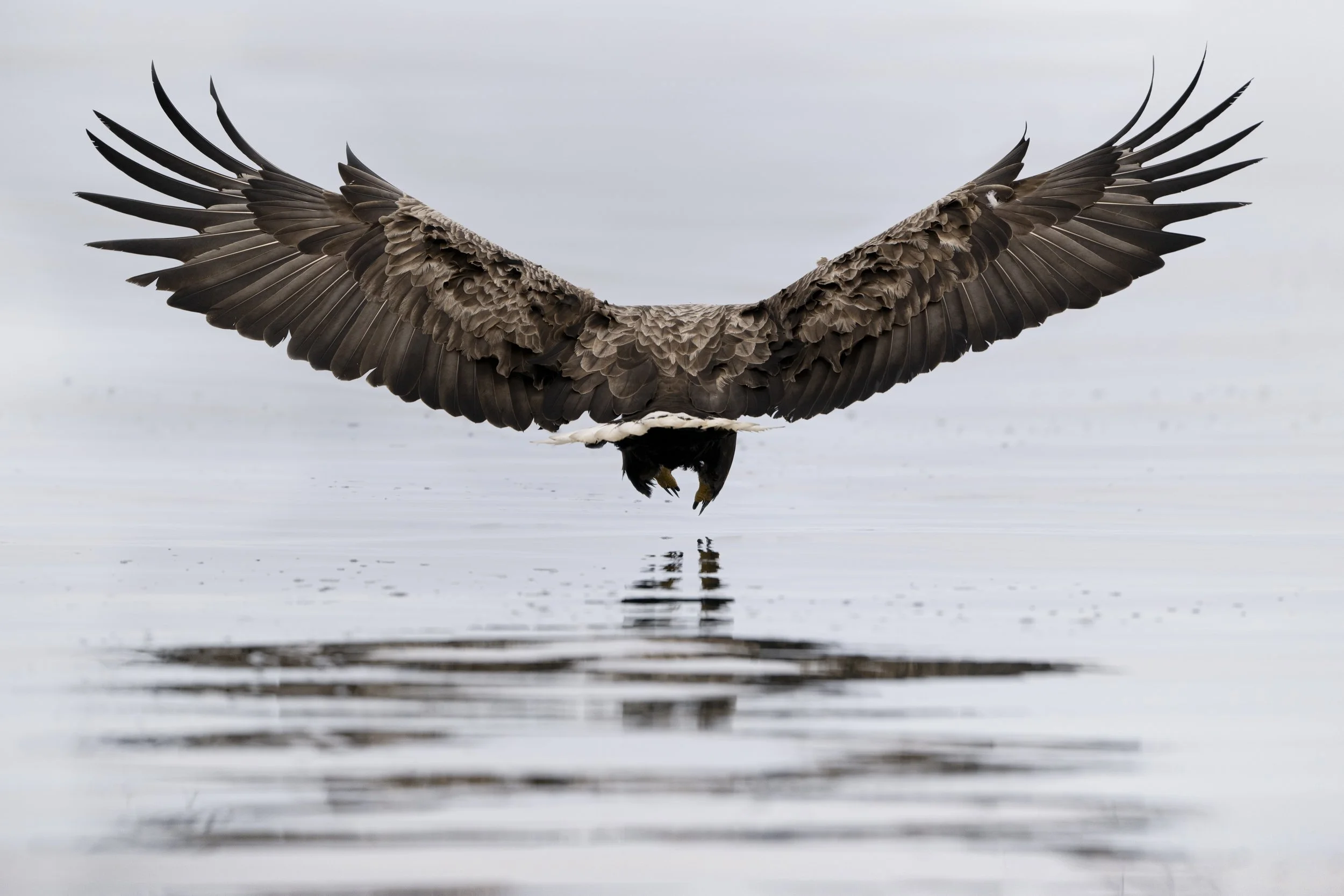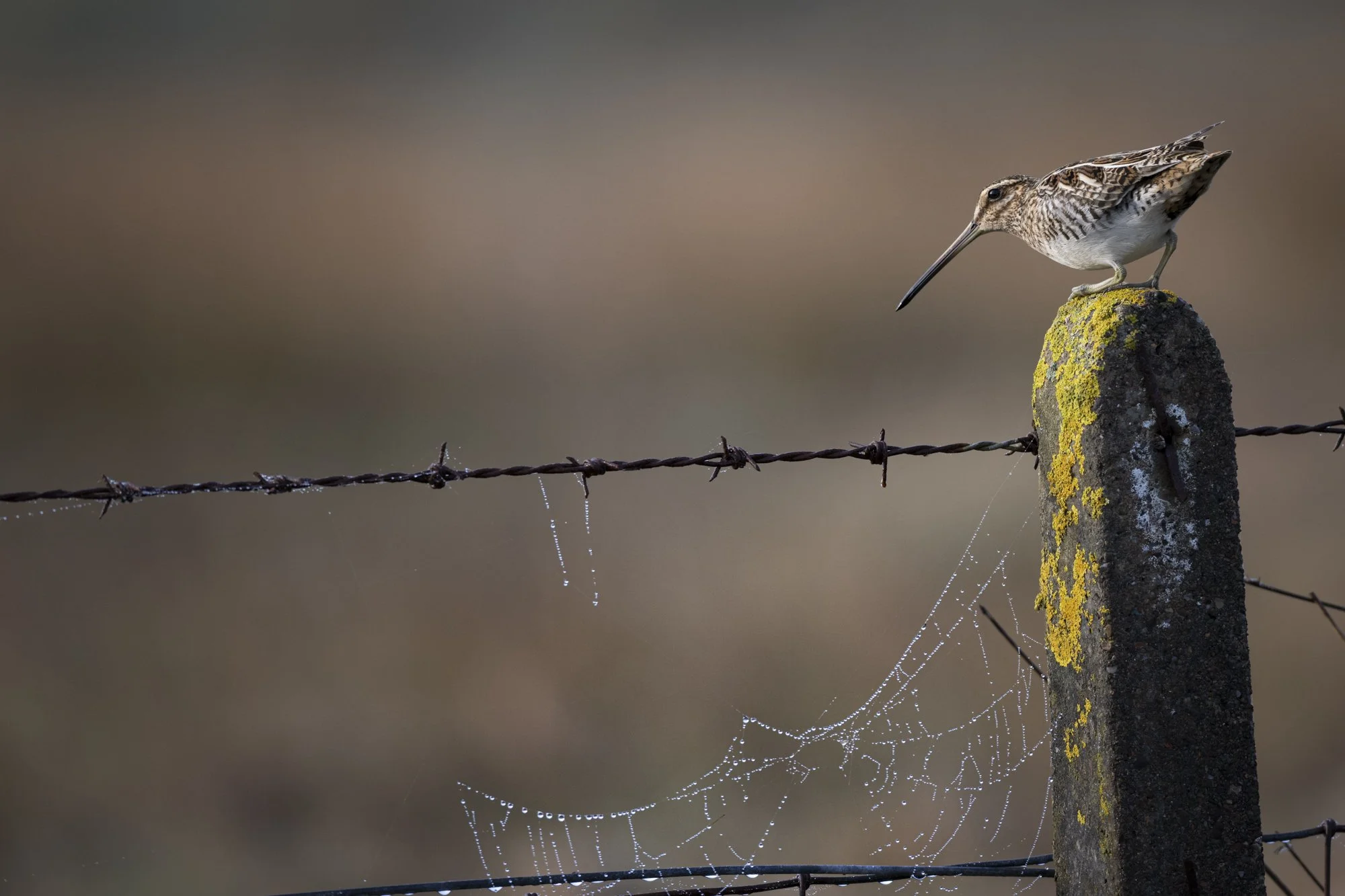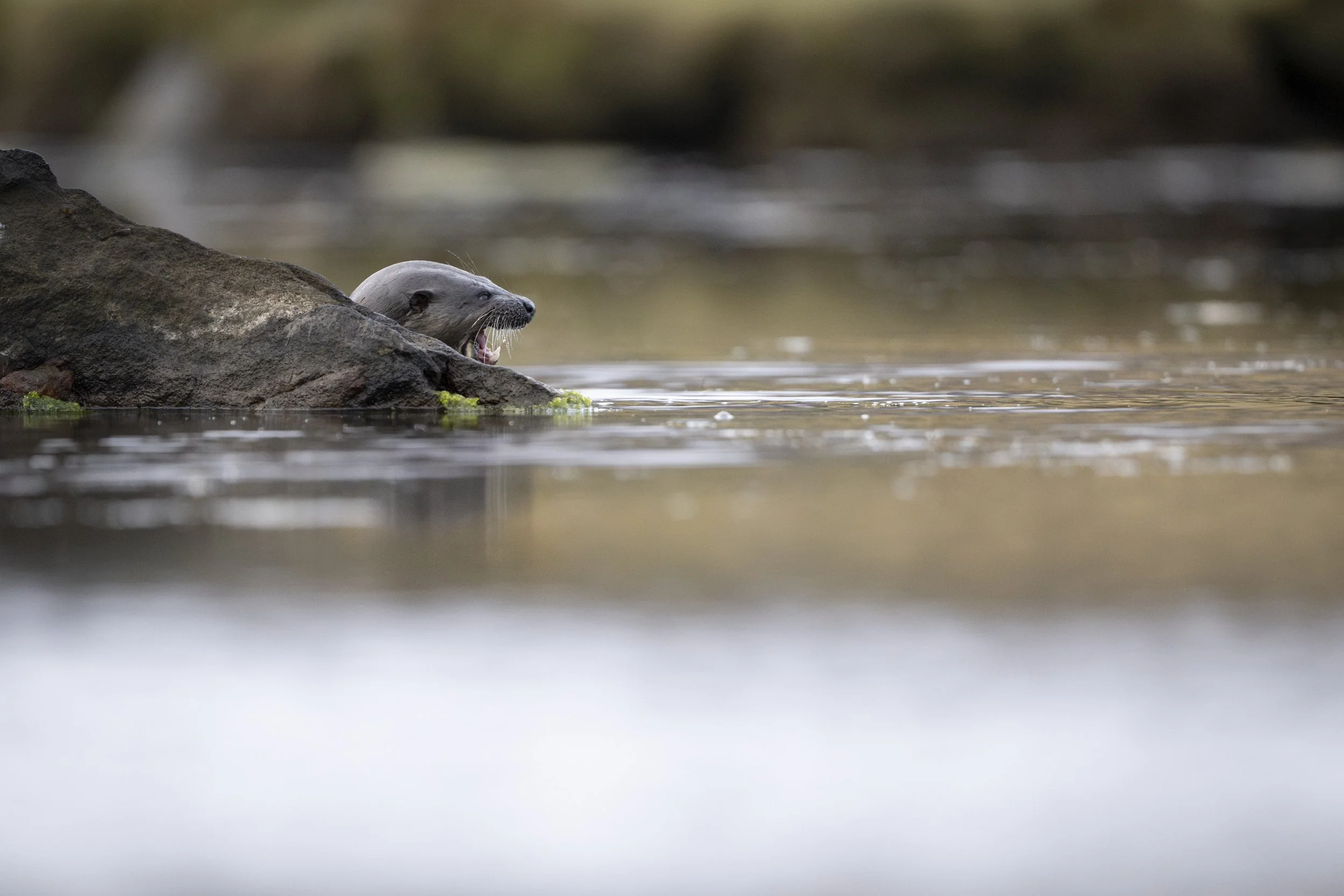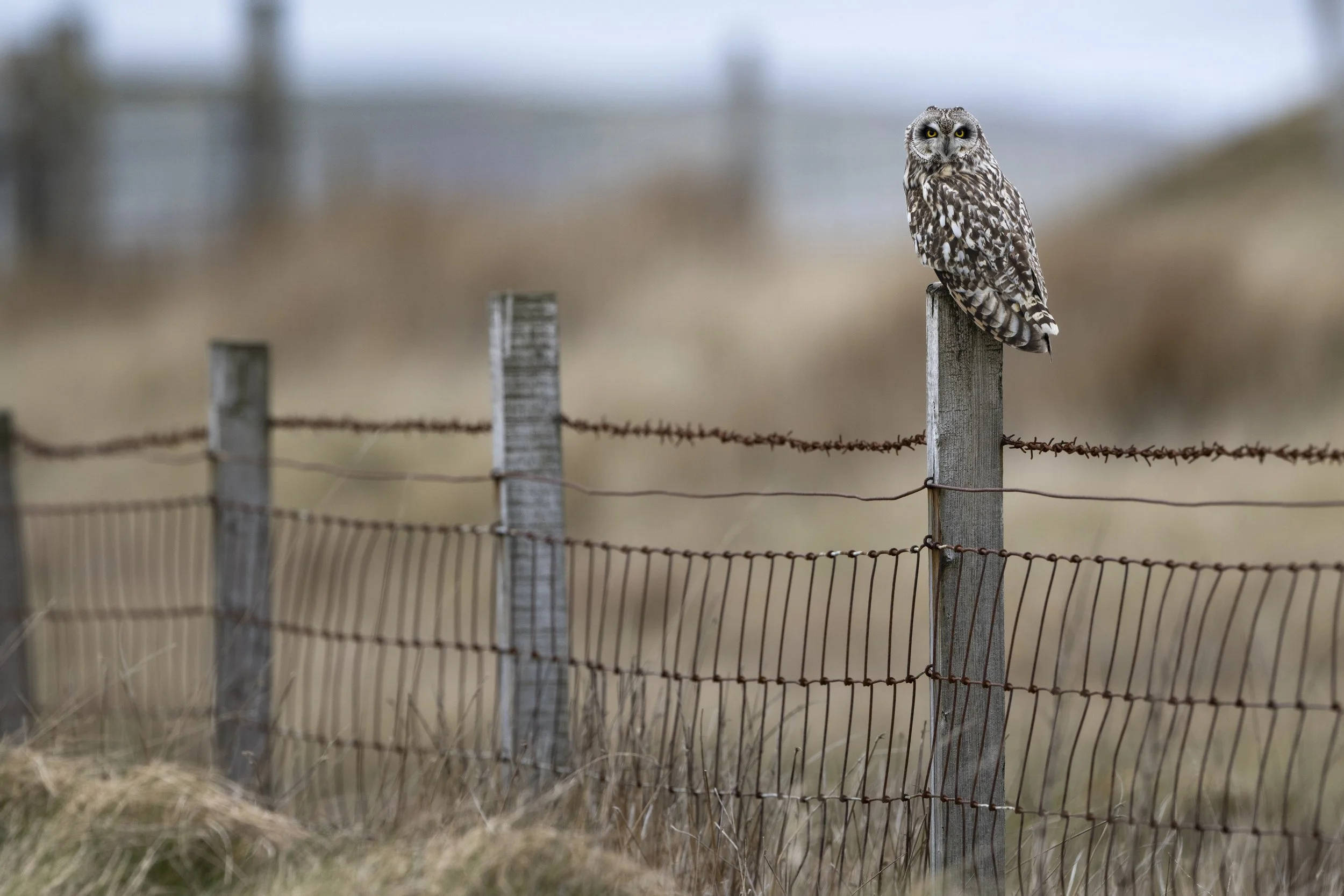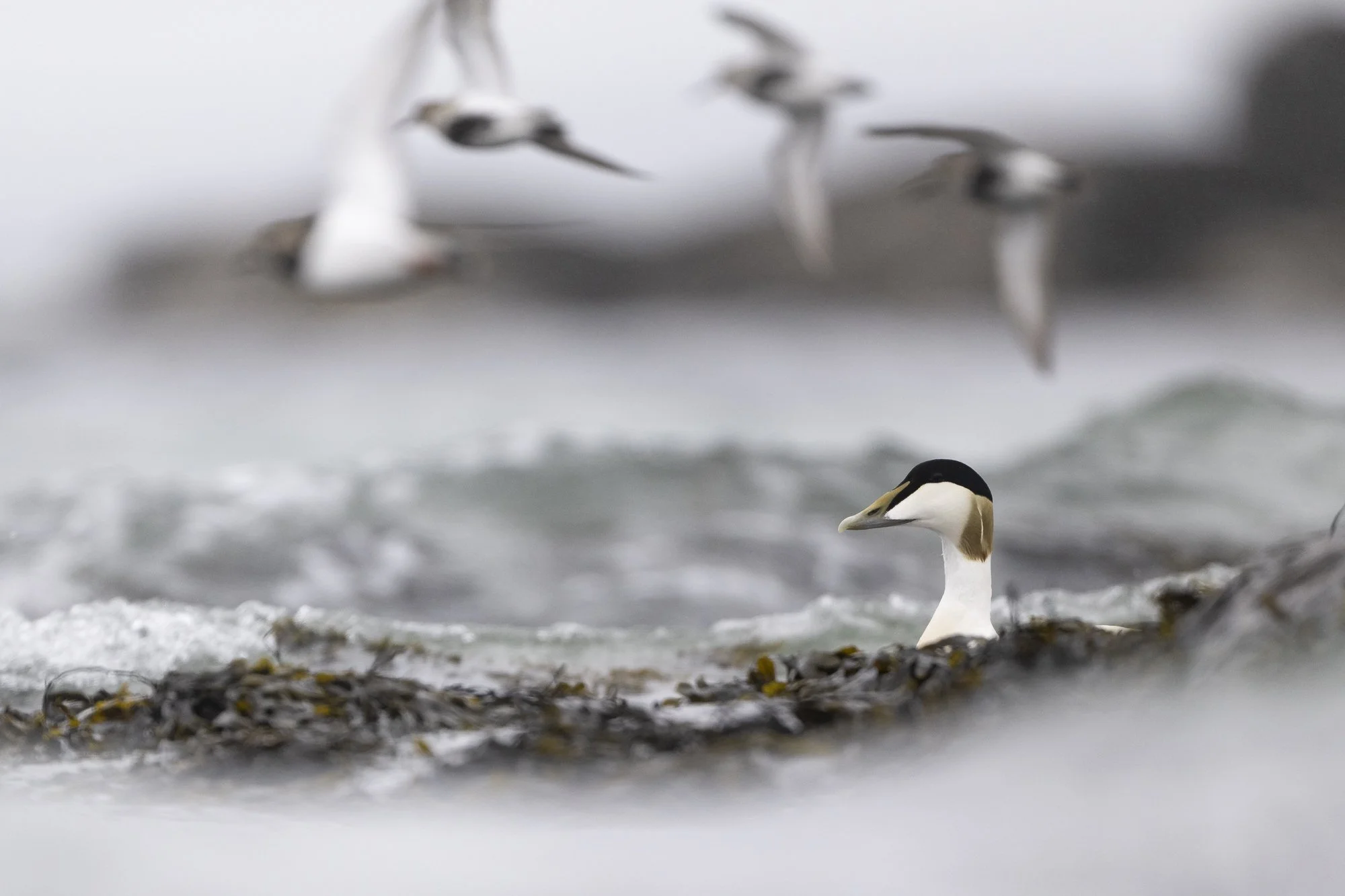The Enchanted Isles of Uist
A White tailed Sea Eagle takes to flight near the deserted Isle of Ronay.
There is always a feeling of exhilaration as the ferry draws close to the Outer Hebrides.
Standing on deck the chill wind cuts through you and the travails of the mainland now seem like a dim and distant memory. Brooding skies, craggy islets together with endless shoreline wait to be explored; and for the most part in perfect solitude. Time to inhale slowly.
My destination are the islands known as the Uists.
North Uist, Benbecula and South Uist are linked by a series of causeways that form part of an archipelago often referred to as the heart of wild Scotland. Unspoilt, untouched and unlike some of the other Hebridean Islands, yet to feel the creeping overreach of tourism, I have lost count of the number of times I have visited these enchanted isles. An incredible sense of excitement and anticipation prevails as the ferry slowly draws into port.
The view from West Beach looking towards the Sound of Harris at sunrise.
If you are planning a photographic trip, the chances are you won’t be packing light.
In my mind a car is essential to explore the Uists to get the most out of your stay. There are a number of ferry crossings, from Uig on the Isle of Skye to Lochmaddy in North Uist (about 1 hour 45 minutes); together with Oban or Mallaig to Lochboisdale in South Uist (about 5 or 3 hours) if you are travelling from the mainland. The ferries are notoriously unreliable so be prepared for last minute cancellations, especially when the weather is unpredictable.
A good idea is to have a contingency plan.
Book a second crossing from an alternate port just in case. I generally travel with a couple of good friends so we spread the cost and on more than one occasion we’ve had to resort to “Plan B”.
An eider takes to flight along the horseshoe bay at Balranald.
Spring is my favourite time to visit the Uists as it is not so much a season but rather a slow awakening from the passage of winter.
It is like a gathering of sound and movement that sweeps northward on the Atlantic winds. From April through to May, these low, weather beaten isles emerge as a crossroads for migration. A super highway where birds from Africa, Europe and the Arctic pause to feed, rest, and breed before continuing their onward journey.
It is no coincidence the shoreline is a frenzy of activity at this time of year, and the hours can drift into days immersed through the prism of your viewfinder, photographing the thousands of small wading birds as they busily feed along the water’s edge.
Across the moors and crofts.
Further inland Lapwing perform tumbling displays, raptors quarter the open moorland, and there is good chance you may hear the first rasping calls of a Corncrake. These skulking birds migrate from Africa to nest in the iris beds of Uist’s croft land; and it is somewhat of a tradition within the community to celebrate their arrival on the isles with the onset of May. Whilst the weather can be unpredictable with prolonged bouts of rain, there is little doubt it is the most magical time of the year.
A Common Snipe surveys the scene at sunrise along Clettreval Hill leading up to St Kilda’s viewpoint.
What is the most enduring appeal of the Uists?
You can literally drive, cycle or walk anywhere along the isles and never know what you might encounter. From the endless freshwater lochens to the rolling moorland and secluded bays along the archipelago, it is a constant journey of discovery.
The Uists were introduced to me by a friend of mine many years ago and my initial impression of the isles was of a rugged, almost desolate landscape devoid of any trees. I felt a little intimidated as the habitat felt so unforgiving. Contrast this with the following afternoon on what would otherwise have been a very mundane trip to the local supermarket to discover Eider and a pair of otters busying themselves on the mud flats next to the car park and I was smitten. A fairly typical sight for the locals you might think; but having travelled around 800 miles from a sleepy village in the heart of Suffolk, you tend to really appreciate moments like that. You could call it my “Uist epiphany”. That’s the enduring appeal; you can always rely on the unexpected when the beauty of the isles just has this unique tendency to reveal itself.
An otter in one of the many freshwater lochens which characterise the Uist archipelago.
If it’s your first trip to Uist then perhaps there is no better initiation than walking through the machair towards West Beach on Berneray.
A world opens onto a striking vista of colour and sound where the waves break across three miles of fine white sand, framed by a gentle arc of dunes. Dunlin and Sanderling scurry along the water’s edge chasing waves, and to the north Oyster Catchers and Turnstones feed along the rocky outcrops. It is a stunning location to explore, particularly at sunset when the the evening light cuts low across the shoreline. That light is special. It just has this unique softness and a warm, subtle sheen.
A short distance across the headland will take you to East Beach.
Unlike the wide tracts of West Beach, East Beach has a more intimate feel which I really enjoy. If you look beyond the shallows you will see The Sound of Harris and when the tide ebbs the flats reveal intricate wrack lines along the shore as the kelp is exposed. Walk along the craggy outcrops and you will find yourself in the company of Wheatear and Pied Wagtails as they flit across the lichen covered rocks.
The tide recedes and the wrack lines reveal themselves along the shoreline at Berneray.
If you pause and sit quietly along East Beach you might just see an otter crossing from the machair towards the sea.
Otters are creatures of the edges, threading the line between salt and fresh water, slipping for the most part unseen between the lochens and the sea. Whilst they hunt for most of their food in the sea, they must wash the salt out of their dense coat regularly to keep it waterproof and in good condition.
Small inlets and tidal streams can often reveal traces of activity such as narrow runs of trampled grass, discreet piles of crab shells or tar like spraints scattered amongst the rocks. A bit like an otter’s calling card when they mark their territory. Dawn or dusk is a good time to catch them when they tend to be most active, especially around high tide when you have good chance to see them on the shoreline.
Wheatear flit across the rocks at West Beach on Berneray at the beginning of May..
This year my home for the week was a small cottage situated on the west coast of North Uist, a short walk from the RSPB Balranald Nature Reserve.
When you’re within walking distance of one of the richest lowland habitats in Europe life seems pretty good. If you follow the sandy path past the visitor centre across the machair, a horse shoe bay reveals itself where your free to roam as the horizon unfolds in every direction. To the north lay the sands of Vallay Strand which are well worth exploring, and to the south in the distant haze rests Hecla and Beinn Mhòr. Follow the bay to the rocky headland of Aird an Runair and discover an excellent viewpoint to scan the horizon for passage birds.
Dunlin, Sanderling, Whimbrel, Eider and Ringed Plover are all common fixtures found along the bay,
A rising tide will push these wading birds into the shoreline and present endless photographic opportunities as they scurry along the water’s edge, feeding on the sand worms in and amongst the kelp.
My visit was in late April and I was encouraged to see the arrival of small numbers of Arctic Terns return to the isles so early in the season. Balranald is a well established nesting ground for Terns but following the outbreak of avian flu numbers have been perilously low over the past few years.
Dunlin and Turnstones take to flight along the shoreline at Balranald.
The Uists are a well known breeding ground for both Golden and White Tailed Sea Eagles.
These incredible creatures are a huge draw to the isles as there can be few sights as exhilarating as an eagle catching the thermals, rising majestically over the lochens and mountain ridges. Despite facing near extinction in the Outer Hebrides numbers have increased steadily thanks to a focussed reintroduction programme and broader conservation efforts.
A good pair of binoculars are essential.
An eagle’s territory is vast and they are easily overlooked which is why a good pair of binoculars are essential on any trip to the Uists. I find myself constantly scanning the horizon and you cannot miss their distinctive silhouette or slow, pronounced wingbeat framed against the sky.
Take a drive up the narrow, single track road to the St Kilda viewing point on North Uist and you have a good chance of seeing both, together with Short Eared Owls and Hen Harriers. Sightings are not unusual and if nothing else the view alone at this location is spectacular. You can see right across the isles from the descending moorland towards Loch Druidibeg, and the broader archipelago.
The view from St Kilda looking down towards Kirkbost and Baleshare.
Closer views of Sea Eagles.
For closer views of Sea Eagles, Nye and his crew from the “Lady Anne” run guided boat trips from Kallin Harbour in Grimsay between May and September.
It is an unmissable experience which offers a unique opportunity to explore the many hidden bays around the Isle of Ronay and the Benbecula. Nye has an intimate knowledge of this part of the coastline together with the Sea Eagles which habitually nest along the rocky crags during the breeding season.
Nesting sea eagle on the Eaval near the Island of Ronay.
Short Eared Owls are a common feature across the Isles.
As is so often the case on these enchanted isles Short Eared Owls can literally appear anywhere; but Balranald, Loch Paible, and the western edges of South Uist offer a useful starting point.
“Committee Road” in North Uist is another striking location.
Committee road is an undulating ribbon of tarmac which cuts right across the open moorland from Sollas in the west to Clachan in the east. I’ve always found sunrise or just before dusk when the owls are particularly active a good time to explore this area. The landscape here is stark, exposed and wind-swept; but on a still morning I’ve often seen Short Eared Owls hunt in the early hours accompanied by Hen Harriers as they rise and fall across the gorse.
Often seen hunting from the fence posts to conserve energy, the Short Eared owl is a common feature across the Uists.
As with any habitat the ecosystem is fragile.
Whilst Uist is a well known location to observe and photograph Short Eared Owls in the Hebrides, they are dependent on the vole population for their primary food source. Numbers can fluctuate. When food is plentiful, they raise broods successfully and the air over the Uists gently reverberates with their presence. This was certainly the case on my last visit, but on leaner years I’ve been hard pushed to see any.
The trick is to find a quiet spot and simply wait. They will appear as if conjured from the ground, coursing back and forth, occasionally hovering, before suddenly dropping into the long grass with a pronounced flutter of their wings.
A male Eider rolls with the surf along the shoreline at Balranald.
If you are a wildlife photographer travelling to the Uists there is a good chance you will be rewarded with some memorable images.
But as the years pass by I have learnt that the isles offer something profoundly deeper than simply chasing photos. It is a landscape which slowly pulls you into the rhythm of its tides, shoreline, secluded bays and rolling moors. It offers a wild ruggedness which asks for patience and understanding. Wildlife photography is about establishing that all important connection. If you slow down and allow yourself to embrace that feeling, not only is there the strong possibility you will take better pictures; but there is also a good chance you will witness the Uists for what they truly are. An archipelago of unrivalled beauty and quiet persistence which gently reveals its secrets before your very eyes.
Time to exhale slowly … until the next time.
